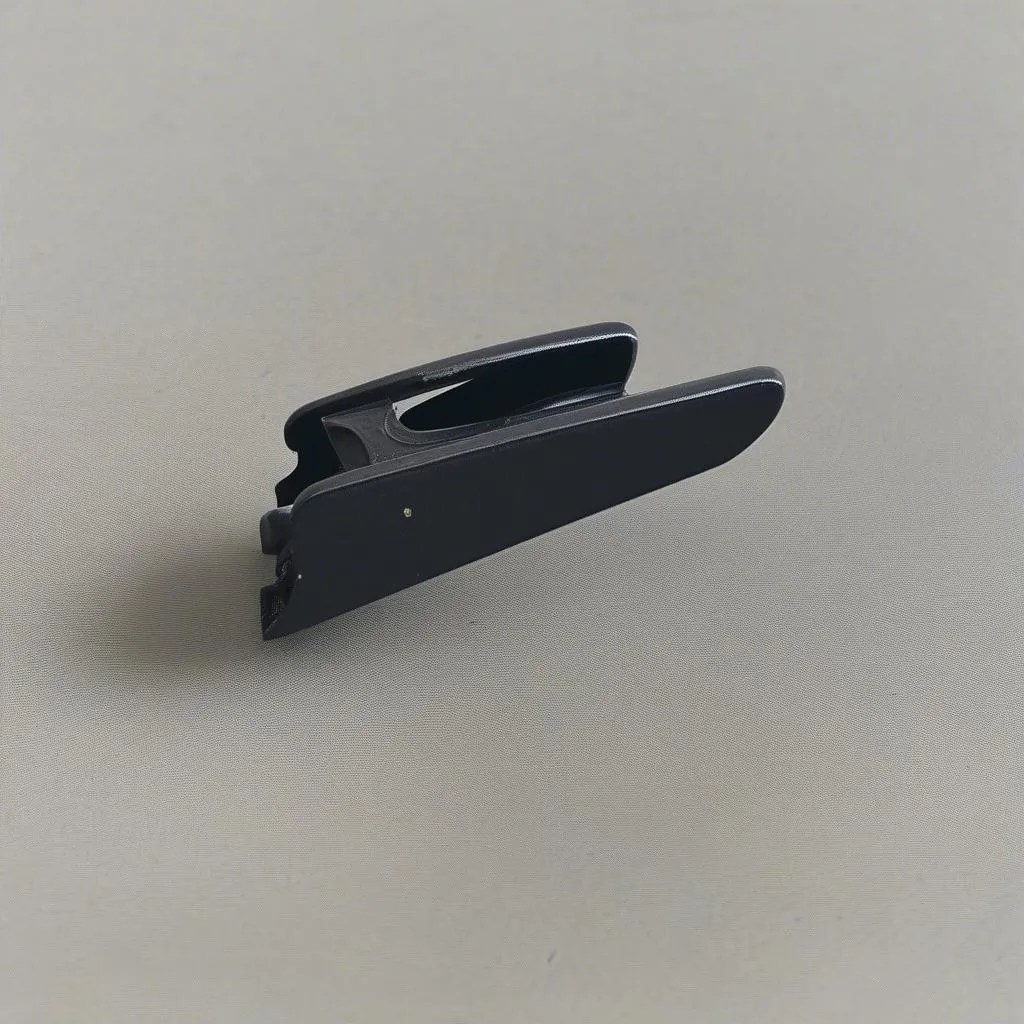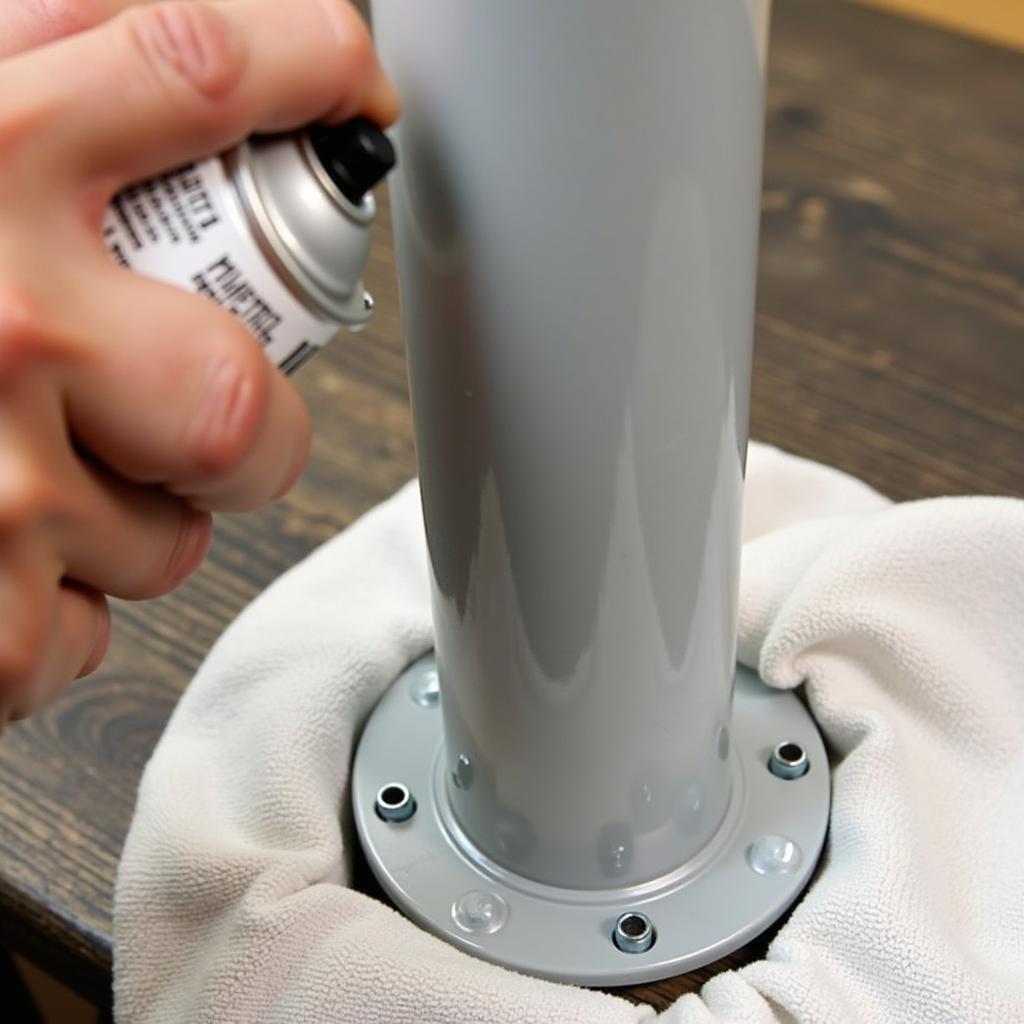Owning a Mercedes Benz comes with a certain prestige, but even these fine German machines can throw a curveball in the form of an emissions code. If you’re staring at a P105 code on your 1999 Mercedes, you’re likely dealing with a mixture control issue. Don’t panic just yet! This article will break down the causes, symptoms, and repair costs associated with the P105 code, helping you navigate this bumpy road with a little more confidence.
Decoding the Mercedes Benz P105 Code
The P105 code specifically points to a problem with the “Mixture Control Air Intake Leak.” This often means there’s an issue with the system responsible for maintaining the ideal air-to-fuel ratio entering your engine. A well-balanced mixture is crucial for optimal performance, fuel efficiency, and of course, keeping those emissions in check.
mercedes-engine-bay|Mercedes Engine Bay|A photo of a Mercedes engine bay, highlighting the complexity of the engine components and systems.
Causes and Symptoms
Several culprits could be triggering the P105 code on your 1999 Mercedes:
- Vacuum Leaks: A leak in the intake manifold or hoses can disrupt the air-fuel mixture, causing the engine to run lean (too much air).
- Faulty Mass Air Flow (MAF) Sensor: The MAF sensor measures the amount of air entering the engine. A faulty sensor can send incorrect data, leading to an improper air-fuel mixture.
- Malfunctioning Oxygen Sensor: Oxygen sensors monitor the exhaust gases and provide feedback to the engine control unit (ECU) to adjust the air-fuel ratio. A faulty sensor can disrupt this feedback loop.
- Wiring Issues: Damaged or corroded wiring connected to any of the aforementioned components can also trigger the code.
car-dashboard-check-engine-light|Car Dashboard Check Engine Light|An image of a car dashboard with the check engine light illuminated, indicating a potential engine problem.
Recognizing the symptoms can help you catch the issue early:
- Check Engine Light: The most obvious sign, the “check engine” light will illuminate on your dashboard.
- Rough Idle: Your engine might sputter or vibrate noticeably, especially when idling.
- Reduced Fuel Economy: A noticeable drop in your miles per gallon could indicate an air-fuel mixture problem.
- Hesitation or Stalling: You might experience a lag in acceleration or even stalling.
Gearing Up for the Fix
To tackle the P105 code, here are some tools you might need:
- OBD-II Scanner: Essential for reading and clearing trouble codes.
- Socket Set and Wrenches: For removing and replacing various engine components.
- Screwdrivers: To access sensors and electrical connections.
- Vacuum Hose Tester: To pinpoint any leaks in the vacuum system.
- Replacement Parts: Depending on the root cause, you might need a new MAF sensor, oxygen sensor, vacuum hoses, or other related parts.
mechanic-working-on-car-engine|Mechanic Working On Car Engine|A mechanic using tools to diagnose and repair a car engine, emphasizing the importance of professional help for complex car repairs.
Repairing the Issue
Note: While these steps provide a general guide, always consult your vehicle’s specific repair manual or seek professional help if you’re uncomfortable working on your car.
- Diagnose the Problem: Start by connecting an OBD-II scanner to confirm the P105 code and check for any additional codes.
- Inspect for Vacuum Leaks: Carefully examine the intake manifold and all vacuum hoses for cracks, loose connections, or damage. Use a vacuum hose tester to pinpoint leaks.
- Test the MAF Sensor: Locate the MAF sensor (usually near the air filter) and inspect it for dirt or debris. You can also test its voltage output using a multimeter.
- Check the Oxygen Sensor: Your Mercedes has multiple oxygen sensors. Locate the one associated with the P105 code and inspect its wiring and connector. A professional mechanic can test the sensor’s functionality.
- Repair or Replace Components: Based on your diagnosis, repair or replace any faulty components. This might involve patching a vacuum leak, cleaning the MAF sensor, replacing an oxygen sensor, or fixing wiring issues.
- Clear the Code: After repairs, use the OBD-II scanner to erase the trouble code.
FAQs: Mercedes Benz 1999 Emissions Code P105
Q: Can I still drive my car with a P105 code?
A: While you might be able to drive short distances, it’s not recommended. Driving with a P105 code can damage your catalytic converter or other engine components, leading to more expensive repairs down the line.
Q: How much does it cost to fix the P105 code?
A: The cost can vary greatly depending on the underlying cause and whether you choose DIY or professional repair. A simple vacuum leak fix might cost under $50, while a new MAF sensor could set you back $200-$400. Labor costs can add another $100-$200 or more.
Q: Are there any preventative measures to avoid the P105 code?
A: Regular engine maintenance, including air filter replacements, spark plug changes, and checking for vacuum leaks, can go a long way in preventing emissions-related issues like the P105 code.
Need Help Diagnosing the Issue?
CARDIAGTECH offers a range of professional-grade automotive diagnostic tools that can help pinpoint the exact cause of your Mercedes Benz’s P105 code. Their user-friendly scanners provide detailed information and guidance, empowering you to tackle repairs with confidence.


